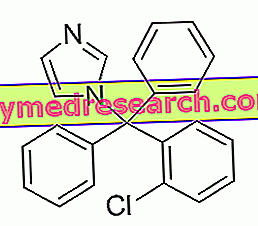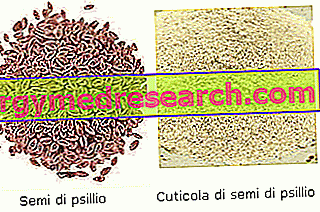Related articles: Hand-foot-and-mouth disease
Definition
Hand-foot-mouth disease is a contagious viral infection, typical of children. It is an exanthematous disease, characterized by a vesicular eruption in the skin and mucous membranes.
Hand-foot-mouth disease can be caused by coxsackievirus A16 (CVA16; responsible for most cases), enterovirus 71 (EV71) or other enteroviruses (eg poliovirus, coxsackievirus and echovirus).
Hand-foot-mouth disease is contagious: it is transmitted via the fecal-oral route or by direct contact with nasal secretions, fluids, saliva or faeces of an infected person, especially after the onset of symptoms.
Hand-foot-mouth disease has the highest incidence in children by 10 years of age; infection in adults causes milder symptoms.
Most common symptoms and signs *
- Oral aphthosis
- Asthenia
- Bubbles on the Tongue
- Appearance of roundish vesicles in the skin and mucous membranes of the facial and / or genital area
- Convulsions
- Dehydration
- Abdominal pain
- Rash
- Temperature
- Fotofobia
- Freckles
- Sore throat
- Headache
- Meningitis
- Stiffness in the muscles of the back and neck
- Drowsiness
- Skin Ulcers
- blisters
- He retched
Further indications
Hand-foot-mouth disease is characterized by a vesicular rash on skin and oral mucosa, which occurs about 3-7 days after exposure to the viral agent (incubation period). Unlike chickenpox or cold sores, the lesions are smaller and usually not itchy. Furthermore, they have characteristic color, shape and size: the vesicles of the hand-foot-mouth disease have a roundish shape, dimensions of about 2-5 mm and a typical greyish color. Fever is frequent (38-39 ° C).
One or two days after the onset of fever, the vesicles appear on the tongue, gums, lips, inside the cheeks, tonsils and throat. These lesions can develop into small, very painful oral ulcers, which can make it difficult to eat, drink and swallow.
Within one or two days, a characteristically localized rash may appear on the hands, feet and, less commonly, on the buttocks, groin and genitals. In these sites, the rash begins in the form of red, non-itchy spots, sometimes associated with painful skin blisters; usually, these lesions are benign and of short duration.
Other symptoms include coughing, lack of appetite, irritability and general malaise.
In some cases, hand-foot-mouth disease can cause vomiting and abdominal pain, particularly if caused by enterovirus 71. This virus can also trigger serious neurological manifestations, such as meningitis, encephalitis or paralysis. Coxsackievirus A16, on the other hand, is generally associated with a self-limiting and mild disease.
The diagnosis is usually based on the clinical presentation; in case of doubt, it can be confirmed by taking and analyzing a small sample of skin, a pharyngeal swab or a fecal sample.
Hand-foot-mouth disease is self-limiting and, in general, the symptoms regress spontaneously within 7-10 days. Therapy involves taking plenty of water or administering intravenous fluids to avoid dehydration. Sprays, mouthwashes and anesthetic gels can be applied topically to relieve the pain of oral ulcers. In some cases, medications can be used to manage fever and relieve sore throat.
The risk of infection can be reduced by practicing good hygiene, such as washing hands thoroughly, especially after using the bathroom or handling diapers, and before preparing food.



